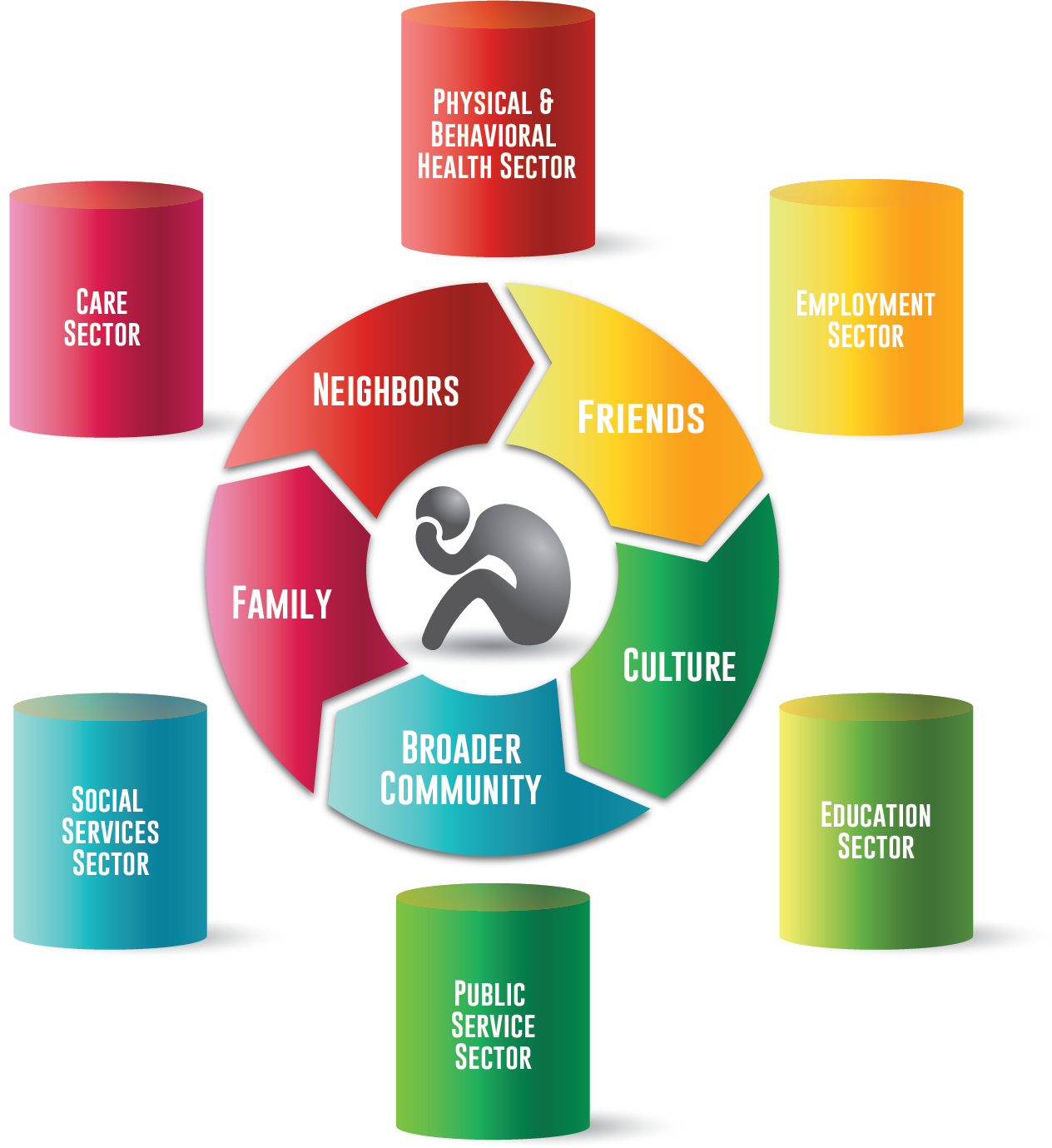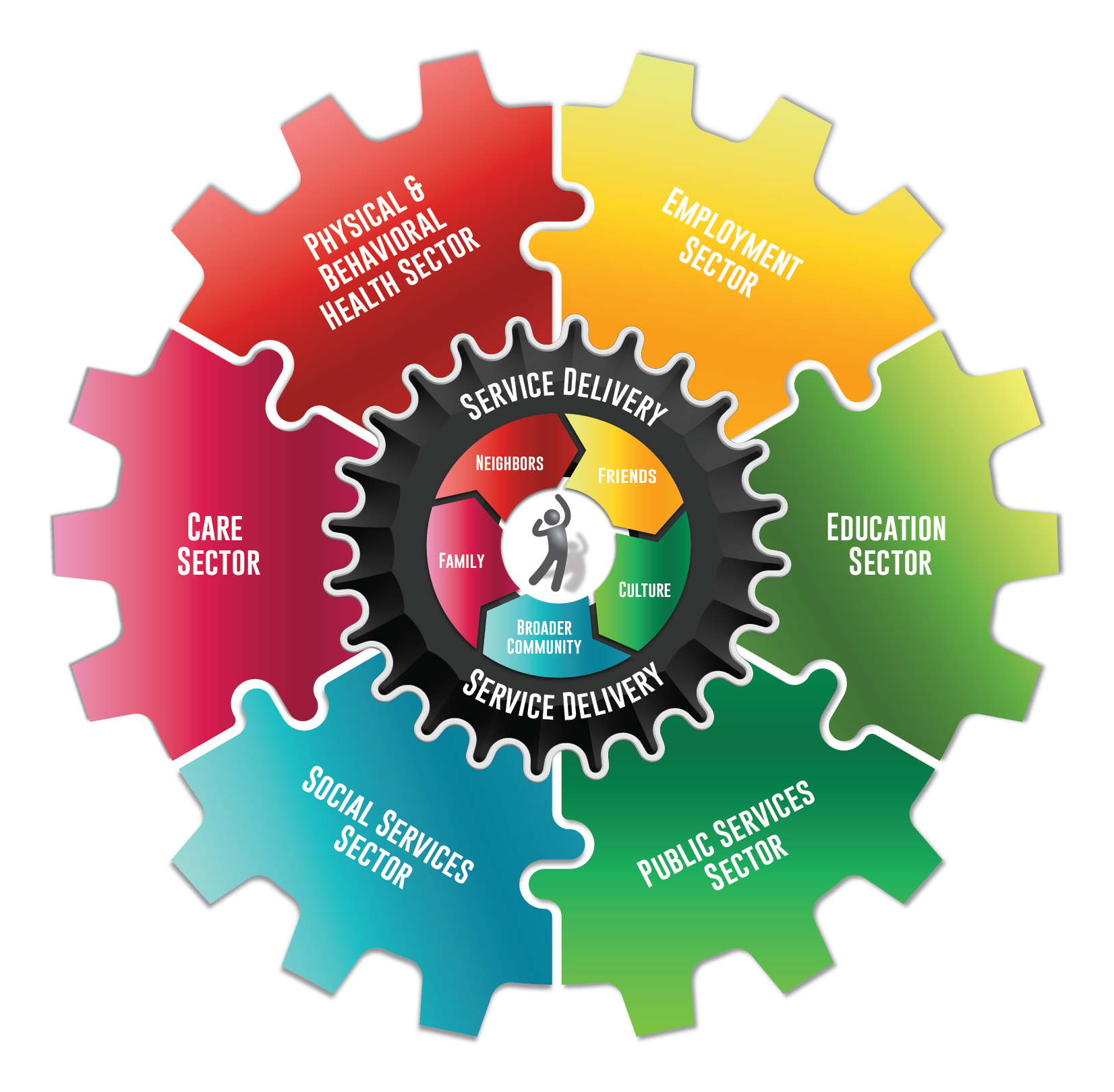Our Theory of Change
Contact UsWhy is making positive change in the delivery of human services so hard?
To answer that question, we look to Dr. Urie Bronfenbrenner’s ecological systems model, which illustrates that a person’s development is influenced by a complex ecosystem of environments and support systems, and pair it with Engel’s bio-psycho-social context.
At the center of all of it, is a person. Throughout life, that person’s development is supported and influenced by a personal network of family, friends and broader community.
That community of support is in turn supported by external agencies that provide human services.
At a macro level, sectors and government departments are created to efficiently create and manage policies, regulations, and systems.
At a micro level, programs within those sectors are developed to deliver those services, and are often augmented with private organizations (NGO’s, non-profits, etc).
But the management and delivery of our human services largely isn’t approached as an ecosystem, and too often the focus on the person/family at the center is lost.
Systems struggle and lose sight of the collective purpose because:
- They are complex
- They are siloed
- They are under-resourced
- Service providers are competitive
Lack of coordination between sectors leads to inefficiencies at best, and at worst services can be contraindicated.
The Problem

A Better Approach
But what if we approached care in a more coordinated way? What if we managed the delivery of our care from a more wholistic and ecological perspective?
Collective Impact Strategies
We focus on the intersections of disparate sectors, knowing that the typical siloes of structures is part of the problem.
We see the connections and serve as guides toward helping others to as well – leading to improved human service systems that benefit people – and when people are thriving, so is society.
Our ecological systems approach encourages us to work in many areas, across disciplines and fields, so long as the connective tissue is a focus on improving people’s lives. Through education. Through employment. Through healthier and happy lives – all with a commitment to affecting these changes broadly and equitably to benefit all.
When approached in this more wholistic manner,
- Most importantly, we find that the person at the center receives better “wrap around” care.
- Resources can be braided together, increasing efficiency.
- Opportunities are revealed for delivery services to work collaboratively instead of competitively, improving the overall efficacy of those services.
- Moves the field from a mindset of scarcity to abundance.
The Solution

